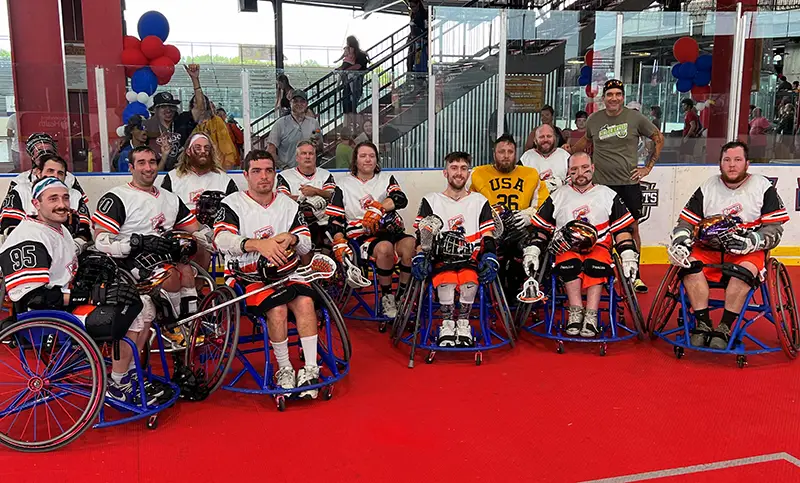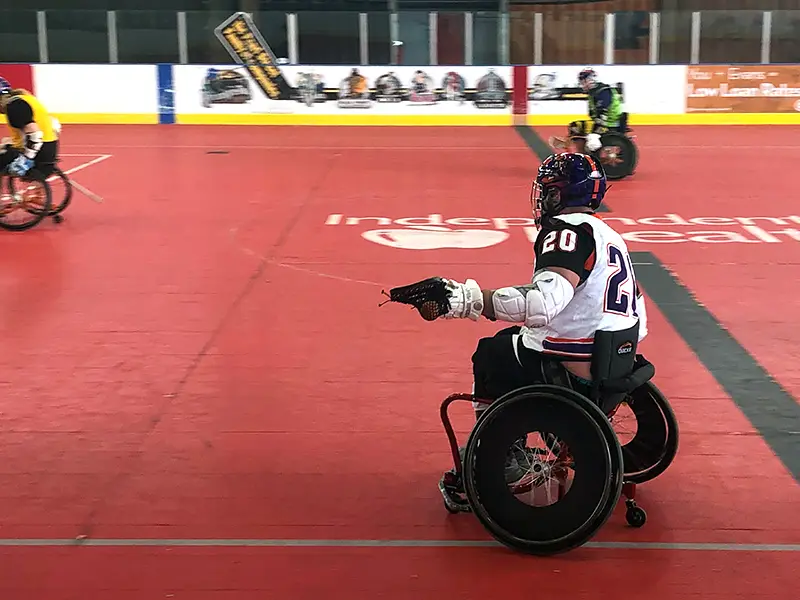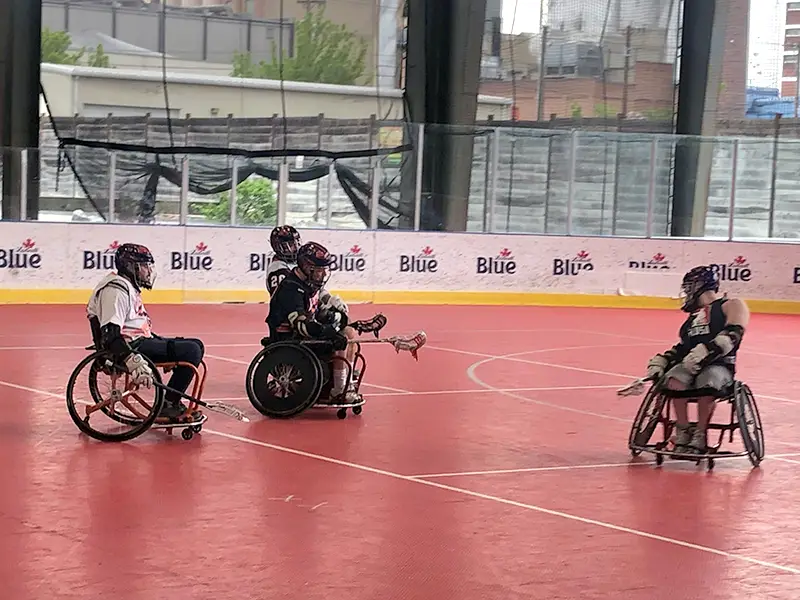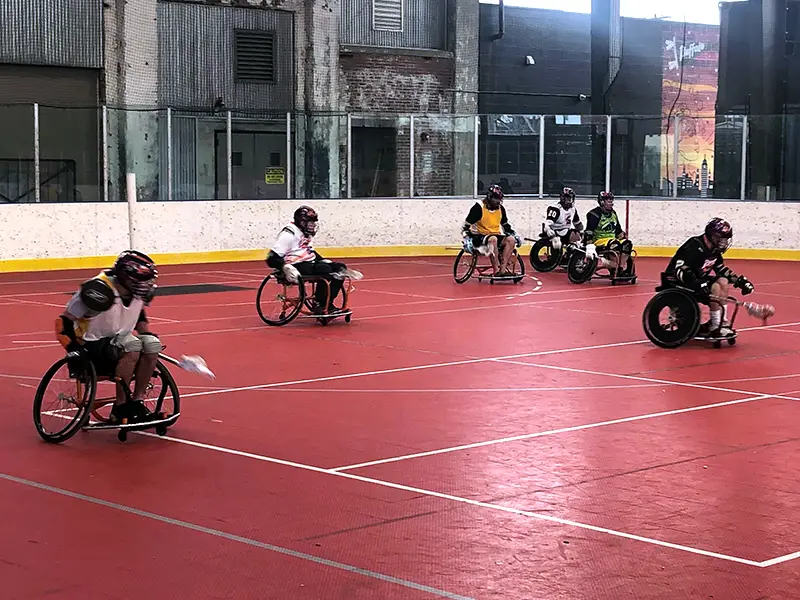Wheelchair Lacrosse USA (WLUSA) is the governing body of wheelchair lacrosse in the United States. Our mission is to organize, develop, and promote the sport of wheelchair lacrosse and provide opportunities for people with disabilities to live active lifestyles.

History
In 2008, Ryan Baker and Bill Lindstrom, both hailing from San Diego, crossed paths. As avid athletes engaged in skiing, golf, tennis, and biking, they shared not only a passion for sports but also experienced spinal cord injuries. Seeking a team sport tailored to their needs, they were dissatisfied with the available options for people with disabilities. Undeterred, they acquired used lacrosse sticks and gear, initiating their venture into wheelchair lacrosse. The duo attracted several players to join them in San Diego, giving rise to the formation of Wheelchair Lacrosse USA. In 2010, Ryan and Bill organized the world's inaugural wheelchair lacrosse camp, dedicating much of the subsequent decade to traversing the country and fostering the growth of the game.

Rules
Wheelchair Adaptations
- Players use specially designed sports wheelchairs that are equipped with features to enhance maneuverability on the lacrosse field.
- The wheelchairs have functional wheel guards to prevent contact between the wheels and players.
Teams and Players
- Wheelchair lacrosse is typically played with two teams, each consisting of eight players.
- Positions include one goalkeeper, two defenders, 3 midfielders, and 2 attackers.
- Players are classified based on their functional ability, ensuring fair competition.
Field and Goal Setup
- The game is played on a standard lacrosse field, with modifications such as a hard surface to accommodate wheelchair movement.
- Goals are set up at each end of the field, and goalies play a crucial role in defending their team's goal.
- A no-bounce indoor lacrosse ball is used for wheelchair lacrosse.
Game Duration
- Wheelchair lacrosse games are divided into quarters, with standard lacrosse game durations.
Scoring
- The objective is to score goals by shooting the lacrosse ball into the opponent's goal.
- Goals are worth a certain number of points, and the team with the most points at the end of the game wins.
Contact and Penalties
- Controlled physical contact is permitted, but there are rules in place to prevent dangerous play.
- Penalties may be imposed for rule violations, and players may be sent to a designated penalty area.
Face-Offs
- Similar to traditional lacrosse, face-offs are used to start the game and to resume play after stoppages.

Wheelchair lacrosse has become a symbol of inclusivity and adaptability within the lacrosse community. As more people with physical disabilities discover the joy and competitiveness of the sport, wheelchair lacrosse continues to grow, fostering a sense of community and teamwork. This adaptive version of lacrosse not only provides a platform for athletes with disabilities, but also showcases the resilience and determination of those who overcome challenges to participate in a sport they love.

There are many wheelchair lacrosse teams across the United States. One of those teams is the Buffalo Bandits run by Norm Page, Adam Page, and Rich Randall. The Buffalo Bandits program was founded in 2017 by Adam Page, a three-time Paralympic gold medalist in Sled Hockey. This past summer, they hosted the second wheelchair lacrosse tournament at Buffalo RiverWorks in downtown Buffalo. The tournament consisted to 10 to 12 teams. The team has had great help from the community, which includes a close relationship and generous support from the professional NLL Buffalo Bandits lacrosse team. Look for upcoming games in the spring! Learn more about wheelchair lacrosse at WheelchairLacrosse.com and find a lacrosse team near you.
About the Author
Before Greater Buffalo Adaptive Sports, there was the Sled Hockey Foundation, the original 501(c)(3) started by Norm Page after his son Adam began playing sled hockey as a child. After years of creating sled hockey programs, Norm and his family decided that the community was in need of other adaptive sport offerings.
Greater Buffalo Adaptive Sports was formed to provide adults and children with physical, developmental, and intellectual disabilities with the opportunity to participate in sports, make friends, and grow. Now, the organization offers a variety of programs and is always looking to expand and to serve a new group of athletes. In addition to a lacrosse team, Greater Buffalo Adaptive Sports also has sled hockey, curling, football, and tennis teams.
Most of the stories here on LiveQuickie.com were submitted by readers. Do you have a story to tell? We'd love to hear it. Submit your story here.